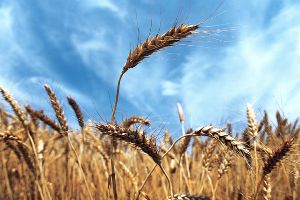Drought-Protecting Chemical Developed to Prevent Crop Loss

A University of California Riverside research team has developed a chemical to protect crops from drought
According to a recent article from University of California Riverside (UCR) Today, researchers have found a new drought-protecting chemical that shows high potential for becoming a valuable asset in fighting against today’s often extreme weather conditions.
The chemical, “quinabactin,” named by a research team at UCR led by plant cell biologist Sean Cutler, mimics a naturally occurring stress hormone in plants that helps better handle drought conditions. The article explains plants have water sensing and drought response systems that are tuned based on their environment. Plants with more water at their disposal will use water at a higher rate and grow quickly as opposed to those that grow slower and use less water in more saturated locations.
However, Cutler explains, “Since farmers have always desired fast-growing varieties, their most valued strains did not always originate from drought-tolerant progenitors. As a result, we have crops today that perform very well in years of plentiful water but poorly in years with little water. This dilemma has spawned an active hunt for both new drought-tolerant crops and chemicals that farmers might use for improving crop yield under adverse conditions.”
United States farmers have been faced with adverse weather conditions the past few summers with crops being drought-stricken. Drought causes worldwide increases in the costs of food, feed and fiber, placing a demand on farmers to produce crops at a steady rate despite adversarial weather conditions. This new chemical could help reduce crop-loss by mimicking a common stress hormone in plants to better handle drought conditions.